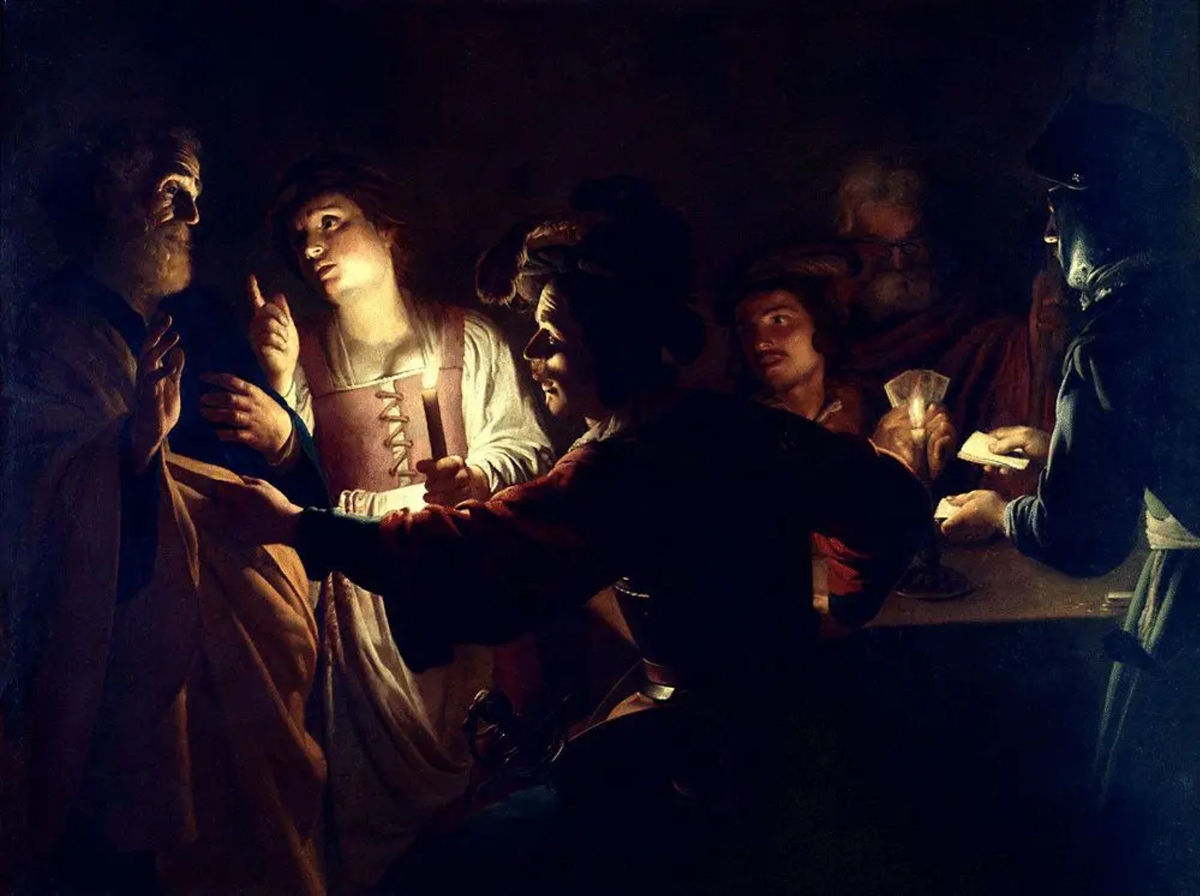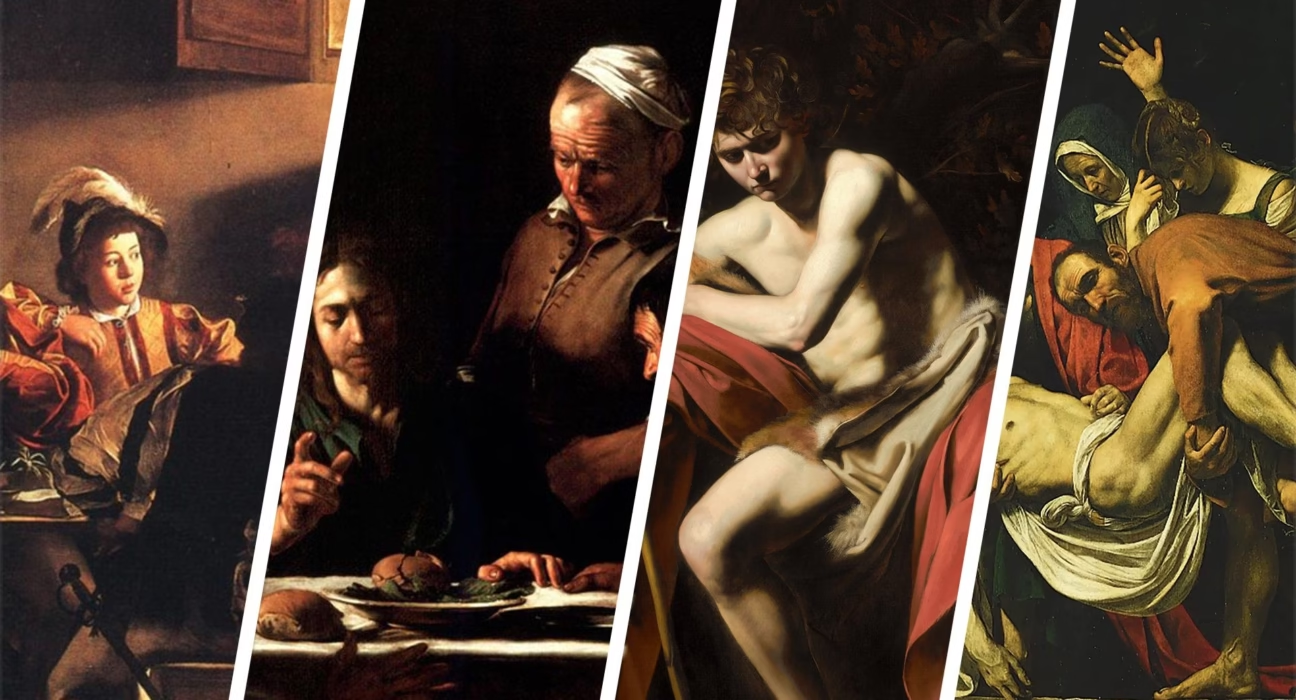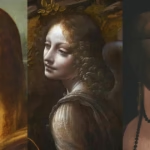Chiaroscuro, a term derived from Italian meaning “light-dark,” represents a profound artistic concept that has shaped the world of visual arts for centuries. Originating in the Renaissance period, this technique revolutionized the way artists approached the representation of form, depth, and emotion in their works. At its core, chiaroscuro is the masterful manipulation of light and shadow to create striking contrasts and dramatic effects. This interplay between illumination and darkness not only enhances the visual impact of a piece but also serves as a powerful tool for storytelling and emotional expression. The chiaroscuro technique transcends mere artistic methodology; it embodies a philosophical reflection on the duality of human existence, where light and shadow coexist in a delicate balance, much like the interplay of joy and sorrow, hope and despair in our lives.
The Historical Evolution of Chiaroscuro
The journey of chiaroscuro through the annals of art history is a testament to its enduring appeal and versatility. From its humble beginnings in the workshops of Renaissance masters to its contemporary interpretations in digital media, chiaroscuro has continually adapted and evolved, reflecting the changing artistic sensibilities of each era.
Renaissance Roots
During the Renaissance, artists began to experiment with light and shadow in unprecedented ways. This period marked the birth of chiaroscuro as we know it today. Artists like Leonardo da Vinci and Tintoretto explored its potential not only to create volume and depth but also to enhance the emotional and narrative power of their works.
Leonardo da Vinci’s subtle blending of light and shadow gave his paintings an ethereal quality. His famous work, The Last Supper, demonstrates how chiaroscuro can be used to direct the viewer’s attention and create a sense of divine presence. The soft, diffused lighting envelops the figures, emphasizing their three-dimensionality and guiding focus toward Christ at the center. In contrast, the darker background enhances this effect, allowing the illuminated figures to stand out while also adding depth to the composition. Rather than relying on stark contrasts, da Vinci’s use of chiaroscuro achieves a harmonious balance, reinforcing the painting’s serene yet dramatic atmosphere.
Tintoretto employed chiaroscuro to create drama and depth in his paintings, particularly through the striking contrast between light and shadow. In his The Last Supper, divine light emanates from Christ, illuminating the figures while the rest of the space remains in darkness, evoking a supernatural and emotional atmosphere. This use of light not only guides the viewer’s eye but also emphasizes the spiritual elements and dynamic movement within the composition.
Baroque Brilliance
As the Renaissance gave way to the Baroque period, chiaroscuro became even more pronounced and dramatic. Baroque artists embraced the emotional power of light and shadow, using it to create works of intense drama and spiritual fervor.
Rembrandt’s use of chiaroscuro in The Night Watch serves as a dynamic narrative tool, guiding the viewer’s eye through the composition. In this painting, the interplay of light and shadow not only enhances the three-dimensionality and volume of the figures but also draws attention to the central characters, effectively unifying a bustling scene into a coherent, moving portrayal of civic duty and collective action.
Caravaggio, on the other hand, pushed chiaroscuro to its extremes with his tenebrism, characterized by violent contrasts between light and dark. His paintings, such as “The Calling of Saint Matthew,” use stark lighting to create theatrical, almost cinematic scenes. This bold approach to chiaroscuro not only heightened the emotional impact of his works but also influenced generations of artists to come.
The Baroque period also saw the rise of still life paintings that employed chiaroscuro to stunning effect. Artists like Georges de La Tour created intimate, candlelit scenes that captured the quiet beauty of everyday objects, transforming them into subjects of profound contemplation through the masterful use of light and shadow.
Techniques and Applications of Chiaroscuro

The application of chiaroscuro extends far beyond simple contrast between light and dark. It encompasses a range of techniques and approaches that artists have developed and refined over centuries to create depth, mood, and narrative in their works.
Dramatic Lighting
One of the most striking applications of chiaroscuro is in the creation of dramatic lighting effects. This technique involves using bold contrasts between light and dark to create a sense of drama, mystery, or tension in a composition.
Caravaggio’s tenebrism is perhaps the most famous example of this approach. In his paintings, figures emerge from deep shadows, illuminated by a strong, often unseen light source. This creates a theatrical effect, focusing the viewer’s attention on key elements of the composition and imbuing the scene with a sense of heightened emotion and drama.
Contemporary photographers and filmmakers continue to draw inspiration from this aspect of chiaroscuro. Film noir, with its stark contrasts and shadowy atmospheres, is a direct descendant of chiaroscuro painting techniques. Similarly, portrait photographers often use chiaroscuro lighting setups to create moody, dramatic images that reveal the character of their subjects.
Spatial Depth
Chiaroscuro is a powerful tool for creating a sense of spatial depth in art. By manipulating the distribution of light and shadow, artists can guide the viewer’s eye through the composition and create a convincing illusion of three-dimensional space on a flat surface.
This technique is particularly evident in the works of Rembrandt. In his paintings, figures in the foreground are often brightly lit, while those in the background recede into shadow. This not only creates a sense of depth but also helps to focus the viewer’s attention on the main subjects of the painting.
In landscape painting, chiaroscuro can be used to create a sense of atmospheric perspective. By gradually lightening tones and reducing contrast in the distance, artists can create the illusion of depth and space, mimicking the way atmospheric haze affects our perception of distant objects in the real world.
Chiaroscuro in Different Art Forms

While chiaroscuro is most commonly associated with painting and drawing, its principles have been adapted and applied across a wide range of artistic mediums, each offering unique possibilities and challenges.
Photography
In photography, chiaroscuro finds a natural home. The very nature of photography as “writing with light” makes it an ideal medium for exploring the interplay of light and shadow.
Black and white photography, in particular, relies heavily on chiaroscuro principles. Photographers like Ansel Adams used the Zone System, a systematic approach to controlling exposure and development, to create images with a full range of tones from the deepest blacks to the brightest whites. This allowed them to capture the drama and majesty of landscapes with unprecedented clarity and depth.
Portrait photographers like Yousuf Karsh have used chiaroscuro lighting techniques to create powerful, evocative images that reveal the character and inner life of their subjects. By carefully controlling the direction and quality of light, photographers can sculpt the face with shadow, highlighting certain features while obscuring others to create a desired mood or effect.
Sculpture
While chiaroscuro is often thought of in terms of two-dimensional art, its principles are equally applicable to sculpture. In fact, the interplay of light and shadow is crucial to how we perceive and understand three-dimensional forms.
Sculptors like Auguste Rodin understood this intimately. His works, with their rough, unfinished surfaces, catch the light in complex ways, creating a constantly shifting play of light and shadow that brings his figures to life. The famous “The Thinker” sculpture, for instance, uses the natural fall of light to emphasize the muscular tension and psychological intensity of the figure.
Contemporary sculptors continue to explore the possibilities of chiaroscuro in three dimensions. Artists working with light installations, for example, create immersive environments that play with our perception of space and form through the manipulation of light and shadow.
Digital Art
In the digital realm, chiaroscuro has found new life and new possibilities. Digital artists have at their disposal a vast array of tools for manipulating light and shadow, allowing for unprecedented control and experimentation.
3D rendering software allows artists to create virtual environments with complex lighting setups, mimicking and even surpassing the possibilities of traditional studio lighting. This has revolutionized fields like animation and video game design, where artists can create richly detailed, atmospheric worlds that respond dynamically to light.
Digital painting software offers artists the ability to work with light and shadow in ways that would be difficult or impossible with traditional media. Layers, blending modes, and adjustment tools allow for precise control over tone and contrast, enabling artists to create stunningly realistic or imaginatively surreal works that push the boundaries of chiaroscuro.
Conclusion
Chiaroscuro, with its rich history and enduring relevance, continues to be a fundamental principle in the visual arts. From the dramatic canvases of Baroque masters to the sleek digital renderings of contemporary artists, the interplay of light and shadow remains a powerful tool for creating depth, mood, and meaning in art. As we look to the future, it’s clear that chiaroscuro will continue to evolve and adapt, finding new expressions in emerging technologies and artistic movements. Yet at its core, it will always remain a testament to the profound impact that the dance between light and darkness can have on our perception and emotions. In studying and appreciating chiaroscuro, we gain not only a deeper understanding of art history and technique but also a richer appreciation for the nuanced interplay of light and shadow in the world around us.
✉️ Stay Connected — Subscribe for Weekly Updates
Discover timeless stories, practical wisdom, and beautiful culture — delivered straight to your inbox.
*We only share valuable insights — no spam, ever.






